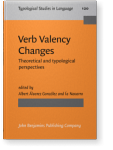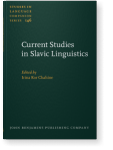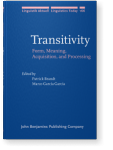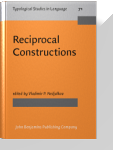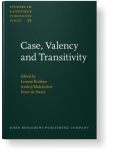Alexander Letuchiy
List of John Benjamins publications for which Alexander Letuchiy plays a role.
2021 Chapter 15. Indirect antipassive in Circassian Antipassive: Typology, diachrony, and related constructions, Janic, Katarzyna and Alena Witzlack-Makarevich (eds.), pp. 483–514 | Chapter
The article focuses on antipassive formation in Adyghe and Kabardian (Circassian < West Caucasian), polysynthetic languages with ergative alignment of basic morphosyntax. The Circassian antipassive is typologically unusual in several respects. First, it is derived not only from transitive, but… read more
2017 Valency-decreasing operations in a valency-increasing language? Verb Valency Changes: Theoretical and typological perspectives, Álvarez González, Albert and Ia Navarro (eds.), pp. 285–304 | Chapter
This paper surveys valency-changing operations in West Circassian (Adyghe), a polysynthetic language of the Northwest Caucasian family. This language has an amazing number of means to increase valency, which include various kinds of applicativization and causativization. In this paper we also… read more
2017 Arabic ‘labile verbs’ in form III: Lability or something else? Verb Valency Changes: Theoretical and typological perspectives, Álvarez González, Albert and Ia Navarro (eds.), pp. 257–284 | Chapter
The article discusses labile (also known as ambitransitive) verbs in literary Arabic. I show that, though Arabic does not have a rich system of labile verbs, some existing cases of lability (labile verbs of form III) are particularly interesting from the typological point of view. Their unusual… read more
2013 A strange variant of Russian ctoby-construction: Irreality and tense-marking Current Studies in Slavic Linguistics, Kor Chahine, Irina (ed.), pp. 149–166 | Article
In my paper, I discuss the choice of the verb form in constructions with a complementizer/adverbial subordinator čtoby. I show that while the situation is rather trivial in biclausal constructions, analysis of triclausal constructions where another clause is embedded under the čtoby-clause reveals… read more
2010 Lability and spontaneity Transitivity: Form, Meaning, Acquisition, and Processing, Brandt, Patrick and Marco García García (eds.), pp. 237–256 | Article
The present paper focuses on labile verbs – lexemes which can behave transitively or intransitively without a formal change. Haspelmath (1993a) and Comrie (2006) claim that the semantic spontaneity is the crucial factor for the distribution of inchoative/causative oppositions, based on data of the… read more
2007 18. Reciprocal, reflexive, and sociative in Adyghe Reciprocal Constructions, Nedjalkov, Vladimir P. (ed.), pp. 773–811 | Chapter
2006 Case marking, possession and syntactic hierarchies in Khakas causative constructions in comparison with other Turkic languages Case, Valency and Transitivity, Kulikov, Leonid, Andrej L. Malchukov and Peter de Swart (eds.), pp. 417–439 | Article

